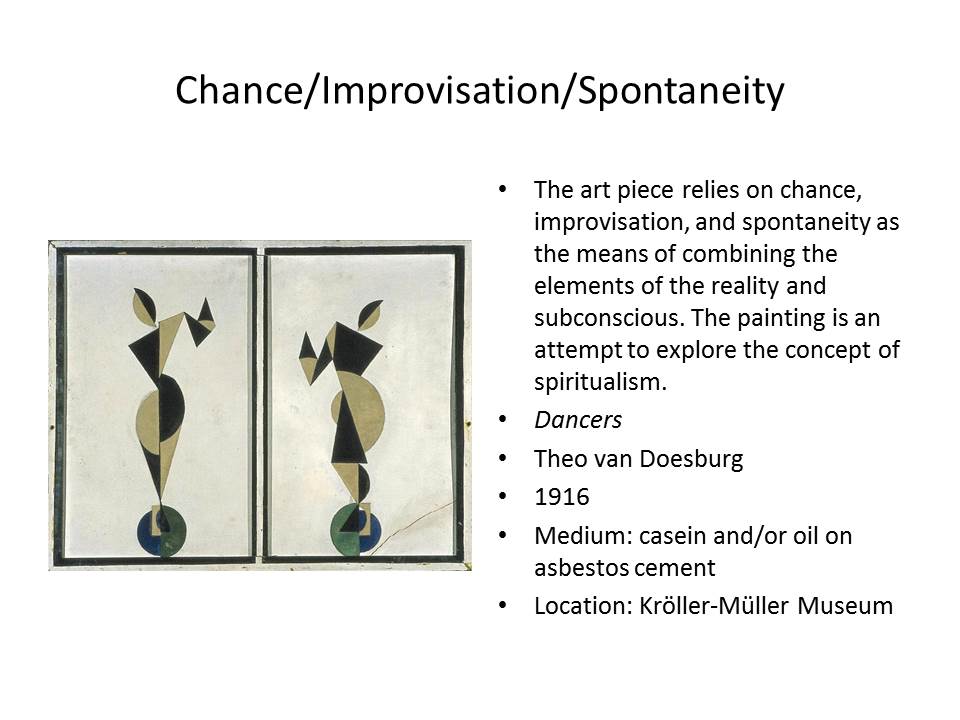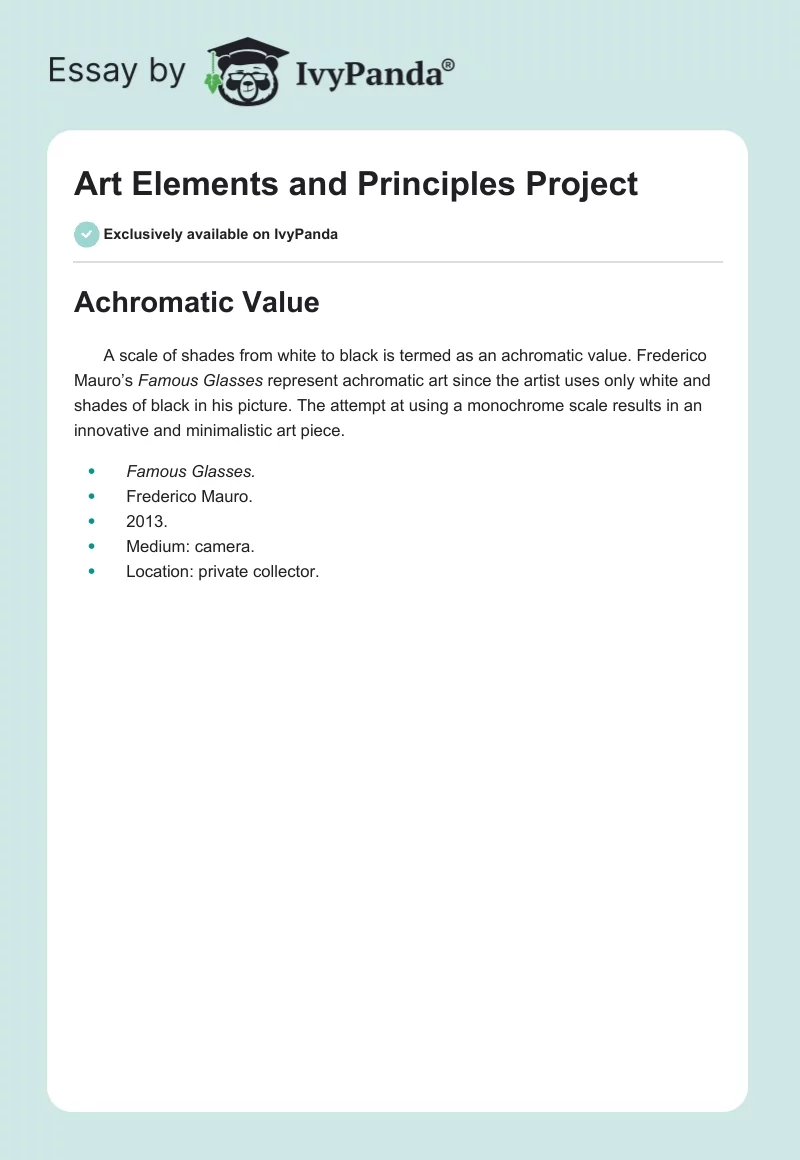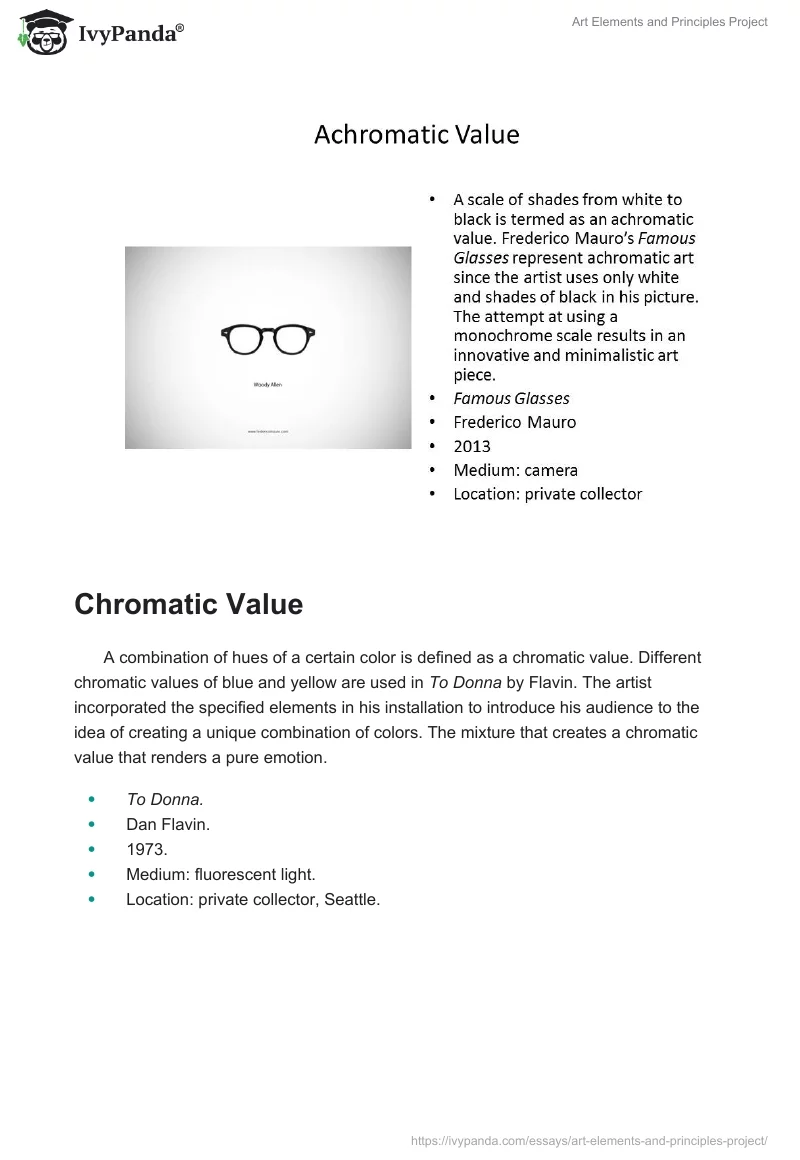Achromatic Value
A scale of shades from white to black is termed as an achromatic value. Frederico Mauro’s Famous Glasses represent achromatic art since the artist uses only white and shades of black in his picture. The attempt at using a monochrome scale results in an innovative and minimalistic art piece.
- Famous Glasses.
- Frederico Mauro.
- 2013.
- Medium: camera.
- Location: private collector.
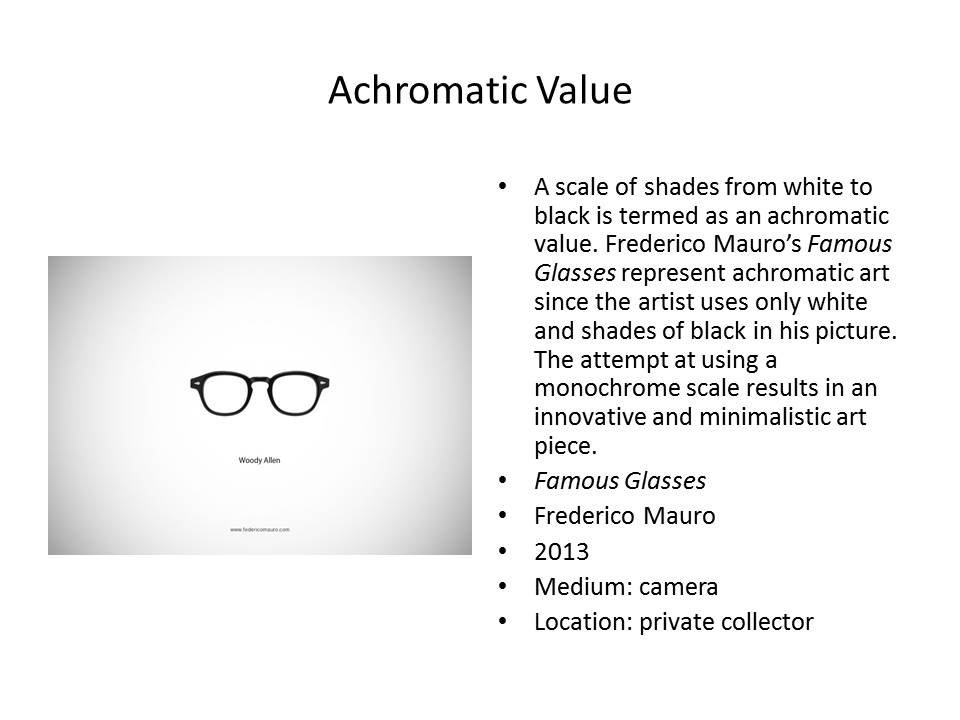
Chromatic Value
A combination of hues of a certain color is defined as a chromatic value. Different chromatic values of blue and yellow are used in To Donna by Flavin. The artist incorporated the specified elements in his installation to introduce his audience to the idea of creating a unique combination of colors. The mixture that creates a chromatic value that renders a pure emotion.
- To Donna.
- Dan Flavin.
- 1973.
- Medium: fluorescent light.
- Location: private collector, Seattle.

Primary Color
The use of primary colors implies incorporating three basic ones to obtain additional hues. Being a graphic example of Chromoluminarism, the painting represents a careful use of primary colors as the means of rendering an emotion and, therefore, appealing to the viewer. The separation of dots allows for an especially vivid portrayal of the scenery in the painting.
- Seascape at Port-en-Bessin, Normandy.
- Georges Seurat.
- 1888.
- Medium: oil on canvas.
- Location: The Metropolitan Museum of Art.

Analogous Colors
Analogous colors are the ones that are located next to one another on the chromatic scale. In his painting, Picasso uses analogous colors to render the atmosphere of despair and agony. The monochromatic scheme of the picture helps create a specific mood of anguish and despair.
- Pablo Picasso.
- 1901-1904.
- Medium: oil on canvas.
- Location: private collection.
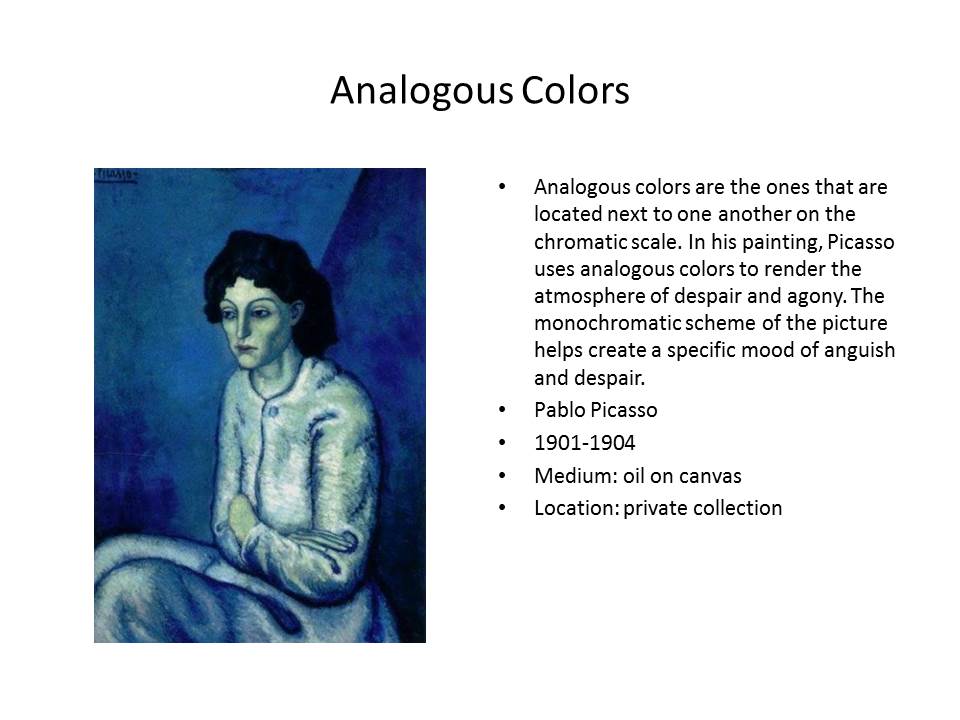
Complimentary colors
Complimentary colors are defined as the colors that are located across each other on the color wheel. In his painting, Renoir used contrasting dark blue tones and light brown ones so that the vibrant image could render the fun and excitement of the experience. The radiance of nature is emphasized with the help of complimentary colors.
- Oarsmenat Chatou.
- Pierre-Auguste Renoir.
- 1879.
- Medium: oil on canvas.
- Location: National Gallery of Art.
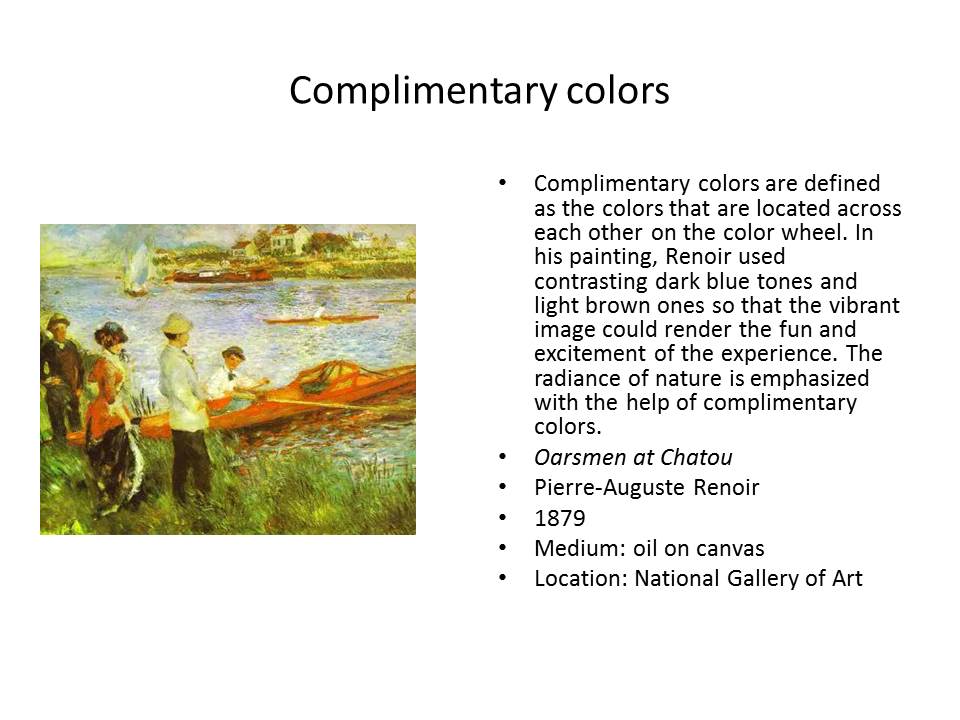
Bold use of Visual Texture
The author explores different opportunities of creating a visual texture by experimenting with colors and hues. The choice of form can also be deemed as rather unconventional; for instance, the sharp edges portrayed in the picture create a rather unsettling mood, thus, building a suspenseful environment.
- Winter Ocean.
- Marino Chanlatte.
- n.d.
- Medium: oil on canvas.
- Location: private collection.
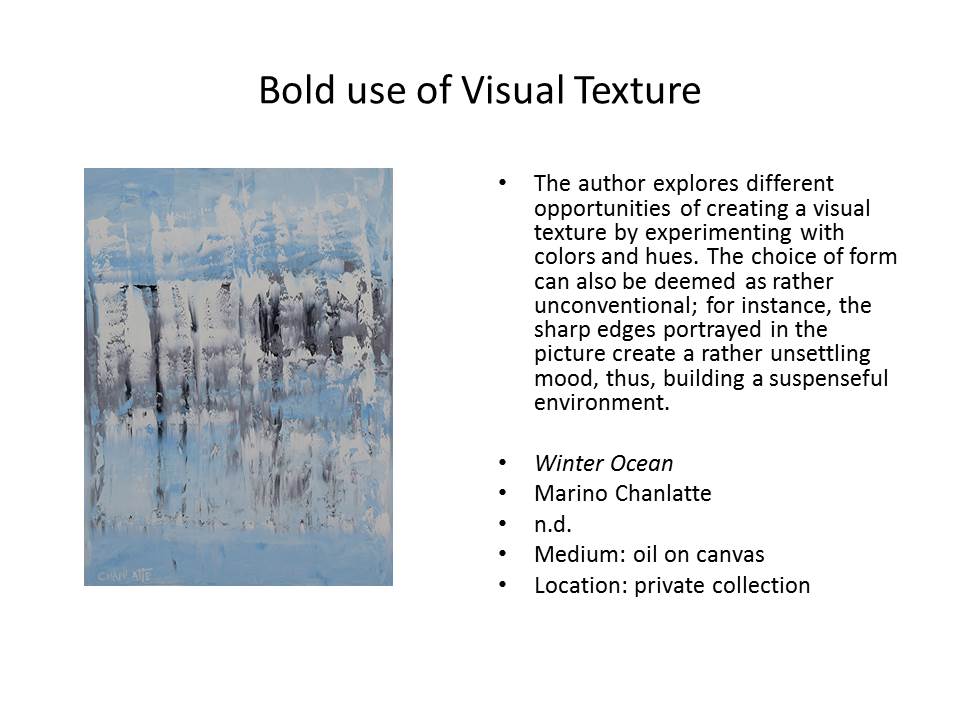
Natural Pattern
Being a canonic representation of the Art Nuveau, Daisy Green Tile incorporates the elements of a natural setting, particularly the components of natural geometry. The art piece represents an attempt at reconciling the concepts of nature and order, therefore, offering a solution to the nature-vs.-nurture debate.
- Daisy Green Tile.
- William Morris.
- n.d.
- Medium: ceramics.
- Location: Membland Hall.
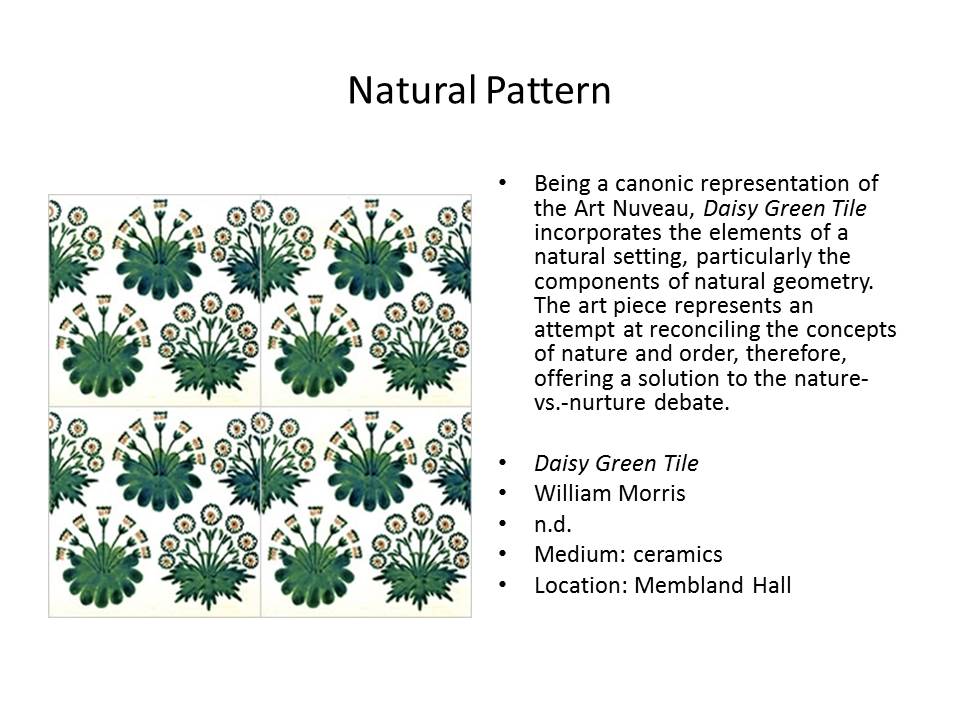
Shape: Geometric
Using basic shapes with the help of points and lines, Frank Stella creates geometric abstractions that encompass the essential ideas of minimalism, as shown in the painting. The art piece helps viewers explore the very nature of artistic expression.
- Honduras Lottery.
- Frank Stella.
- 1972.
- Medium: lithograph.
- Location: Christies.com.
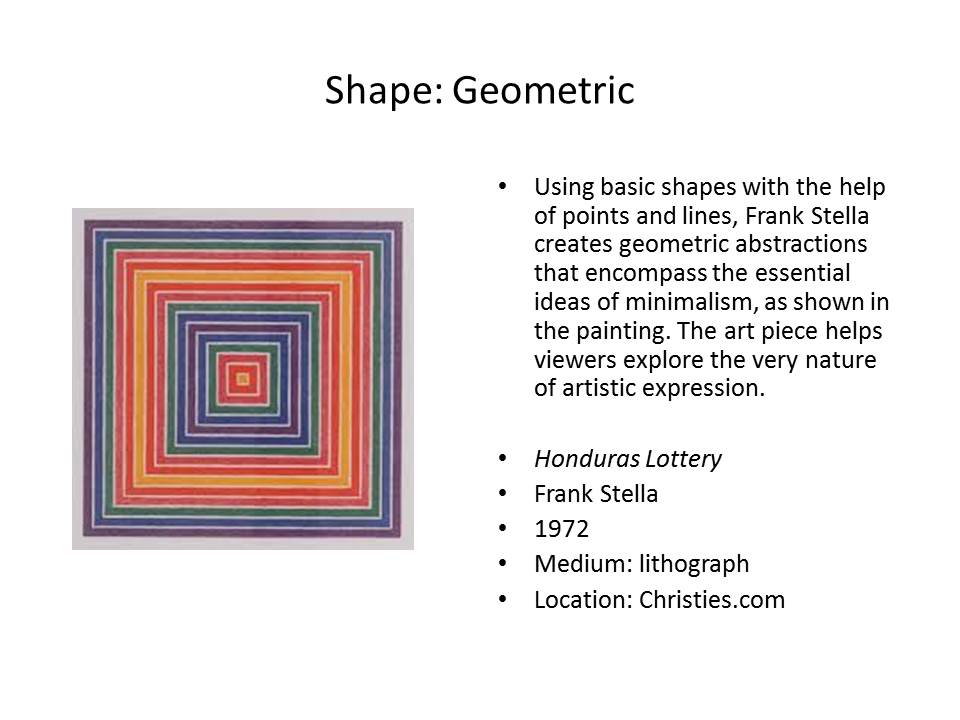
Shape: Biomorphic
The biomorphic elements of the picture allude to the concept of hedonism, its bright and vivid color scheme supporting the overall feeling of joy. The combination of rest and motion captured in the painting adds to the emotional expressivity of the picture.
- Le Bonheur de Vivre (The Joy of Life).
- Henri Matisse.
- 1906.
- Medium: oil on canvas.
- Location: The Barnes Foundation.
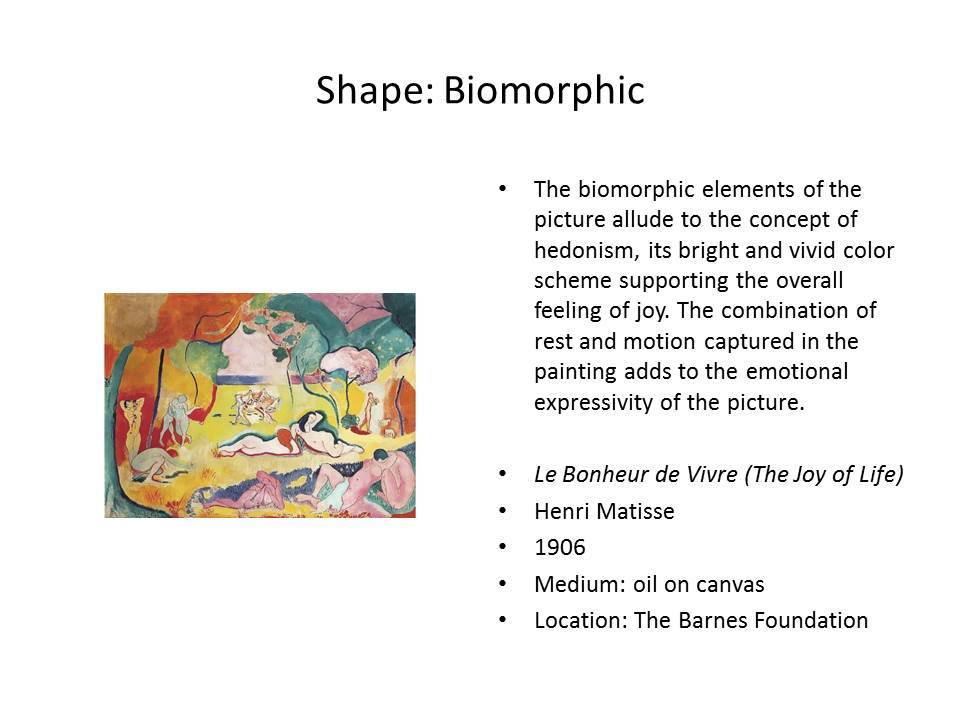
Space: First type of perspective discussed in text. Which one?
Linear Perspective
Using lines to create an impression of depth, the linear perspective of The Adoration of the Magi immerses viewers into the world built by the artist. As a result, the picture represents a nearly complete illusion of depth with the help of parallel lines.
- The Adoration of the Magi.
- Juan Bautista Maíno.
- c. 1510.
- Medium: oil on wood.
- Location: Uffizi.
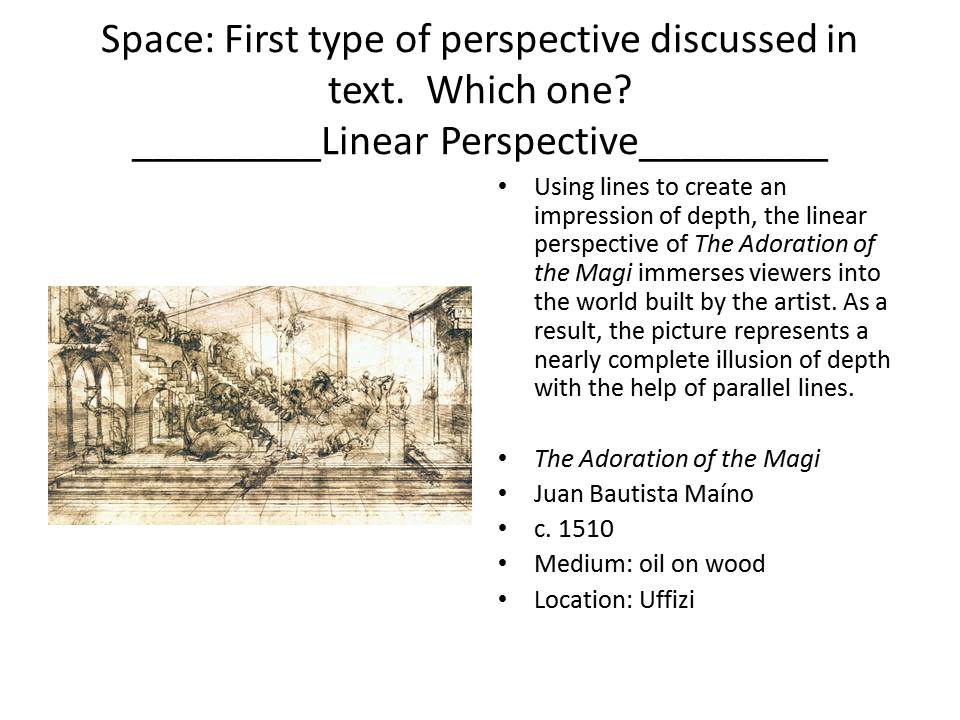
Space: 2nd type of perspective discussed in text. Which one?
Aerial Perspective
The use of an aerial perspective allows creating an illusion of depth, therefore, adding a unique experience of exploring the environment of a picture. In his picture, Patinir contrasts line and shade so that the painting could seem extraordinarily real.
- Landscape with the Flight into Egypt.
- Joachim Patinir.
- 1520.
- Medium: oil on canvas.
- Location: Museo Nacional del Prado.
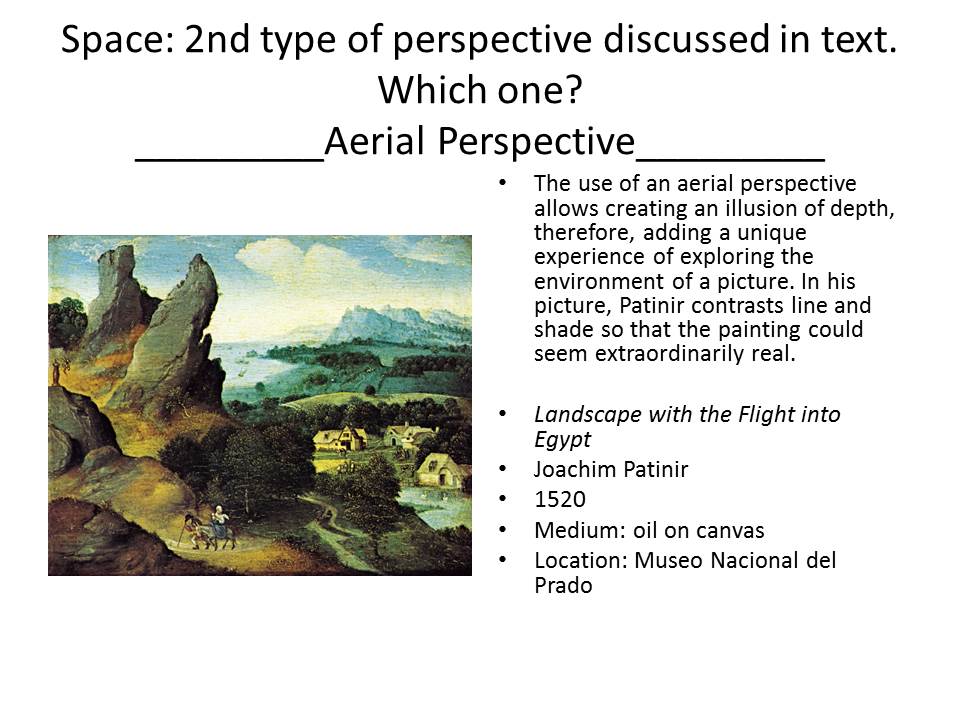
Time
In his painting, Duchamp captures a passage of time as a concept by depicting the same person multiple times, with each step being clearly portrayed. The use of abstract elements in the painting allows creating an impeccable illusion of movement.
- NudeDescending A Staircase.
- Marcel Duchamp.
- 1912.
- Medium: Oil on canvas.
- Location: Philadelphia Museum of Art.
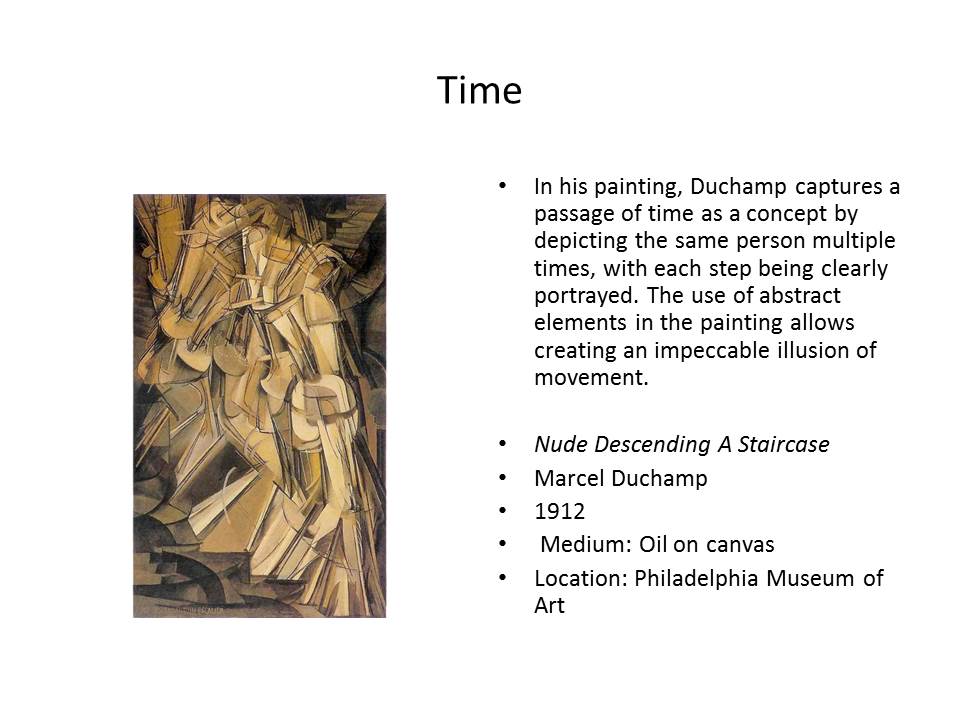
Motion
The art piece represents a focus on new technologies that encourage progress. The picture captures motion, speed, and light, creating a unique harmony with its original line work. As a result, the picture appeals to the audience on an emotional level.
- Trasvolatore.
- Gerardo Dottori.
- 1931.
- Medium: Oil on canvas.
- Location: Philadelphia Museum of Art.
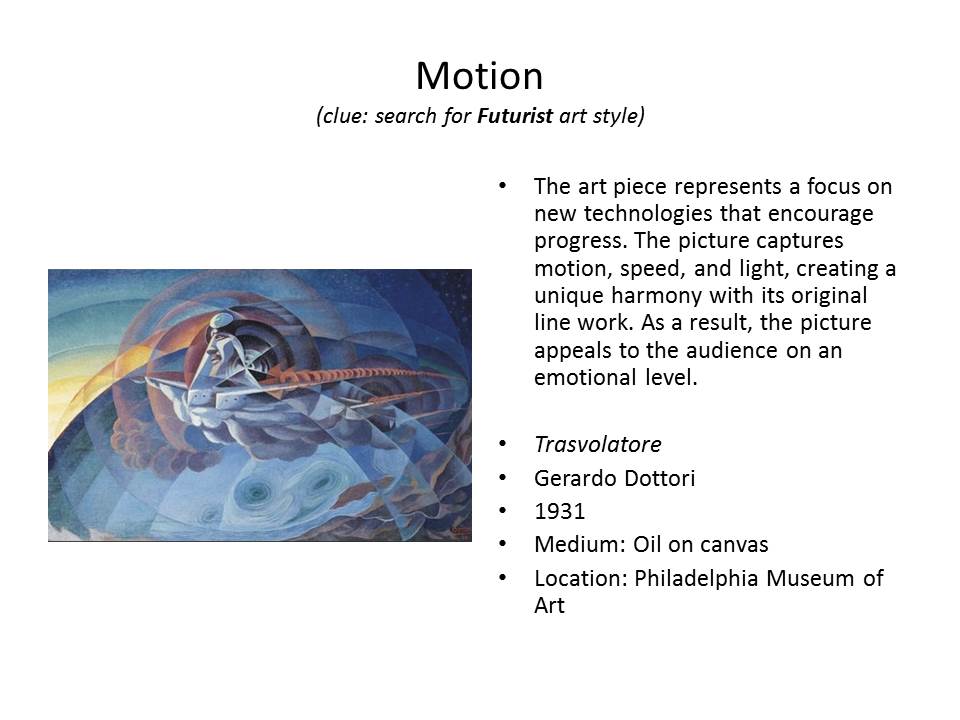
Chance/Improvisation/Spontaneity
The art piece relies on chance, improvisation, and spontaneity as the means of combining the elements of the reality and subconscious. The painting is an attempt to explore the concept of spiritualism.
- Dancers.
- Theo van Doesburg.
- 1916.
- Medium: casein and/or oil on asbestos cement.
- Location: Kröller-Müller Museum.
